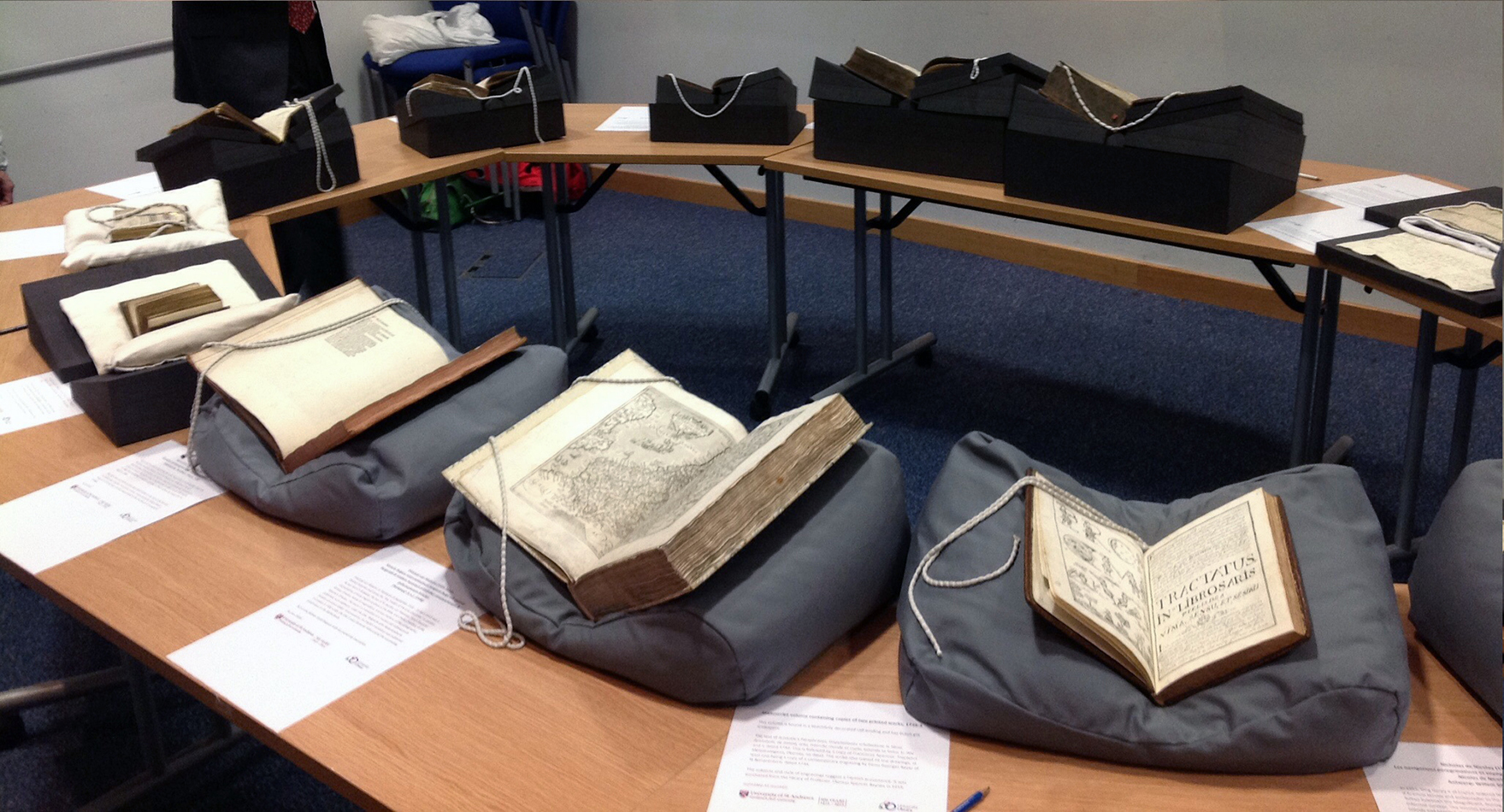Scotland and the Flemish People
We recently put on a display for the ‘Scotland and the Flemish People’ conference, which focussed on the relationship between Scotland and Flanders, primarily in the medieval era.
We were pleased to discover many interesting examples of Flemish culture in our collections – we’ve picked out some of the highlights below:
Text of the office for the dead with other devotional works, c. 1510
msBX2095.B00 (ms937)
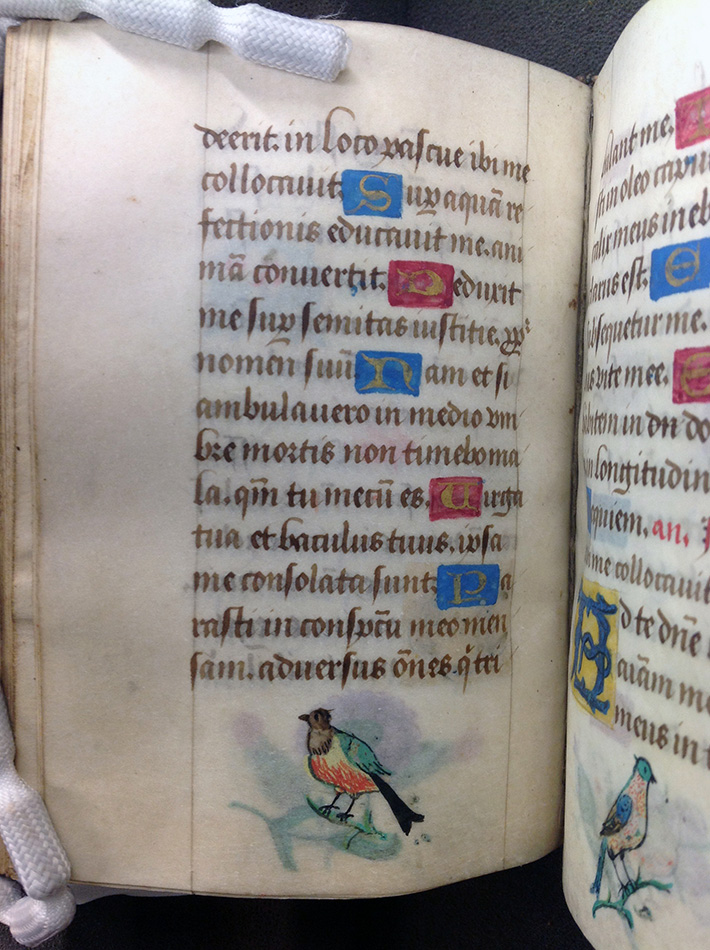
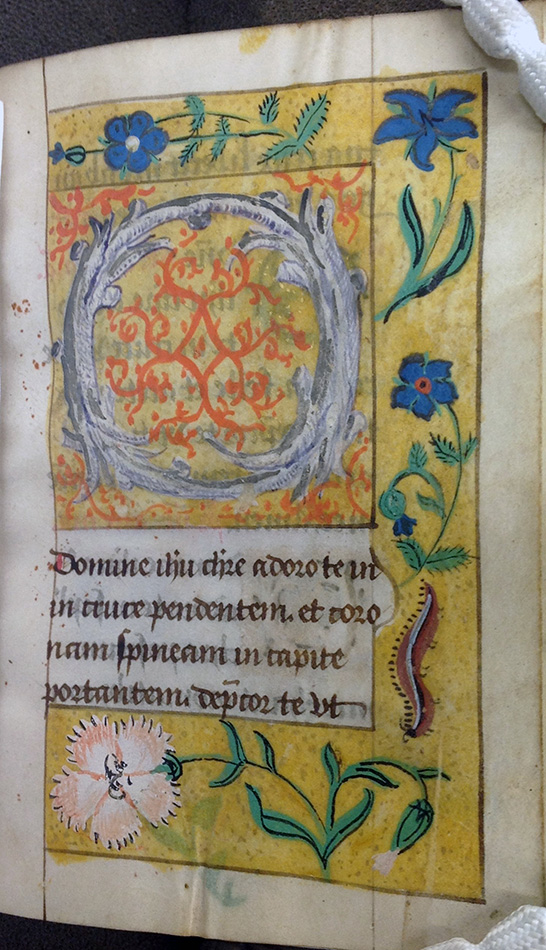
This beautiful little manuscript was produced in northeast France or French Flanders. It features illuminated capitals, some three-quarter framed borders, and small coloured drawings of birds, animals, flowers, insects or objects at the bottom of most pages.
Its small size suggests it was probably used for private devotions rather than for public worship. It would have been read to prepare for the possibility of death by reciting the office of the dead and associated psalms, and prayers to the intercessor Mary. It might also have been read on the anniversary of a death, or before a burial.
The text includes the vigil of the dead (vigilie mortuorum), penitential psalms, litany, the seven Odes of St Gregory, the prayer of St Ambrose before the celebration of mass, a communion prayer and, in a 16th century hand, a supplement of prayers to the Virgin. The binding dates from the 18th century.
A Flemish Psalter, c. 1500
msBS1443.F6 (ms650)
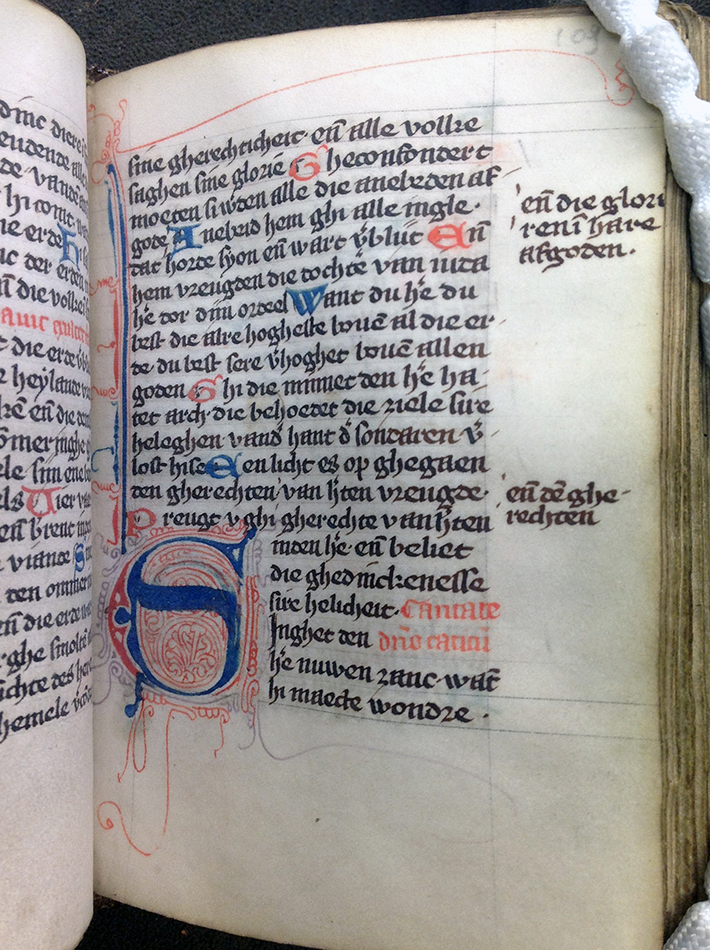
Variously known as a ‘Flemish’ or ‘Germanic’ Psalter, we established at the conference that this work is actually written in Middle Dutch.
The text is in two parts: folios 1-156v contain Psalms 1-150: Salich es die man die niet af enghine inden raet der onghenadigher … alle geeste louen den here. This is followed by canticles, and Apostles’ Creed, both having Latin rubrics.
The decoration features the typical red and blue initials of the period, with red, blue or violet ornament, and some of the initials are illuminated.
Charter by David Fleming of Perth, 13 March 1546/7
UYSL110/PW/107
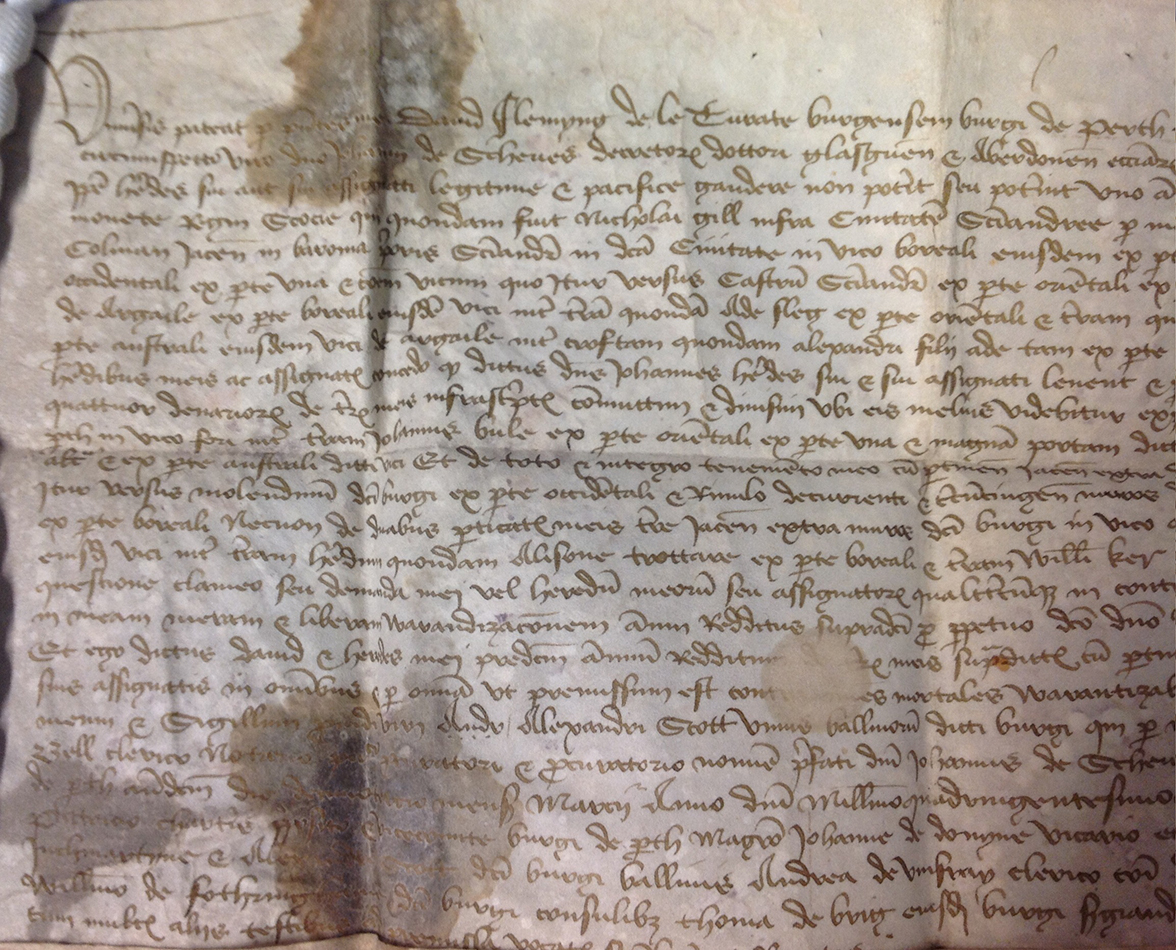
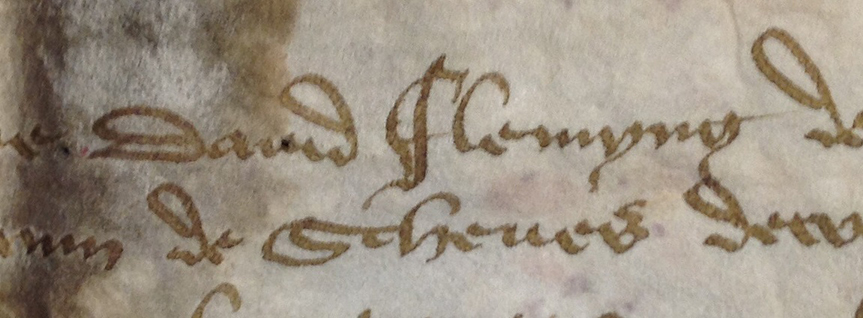
Two Flemings are involved in this transaction – David Fleming as the vendor and Alexander Fleming as a witness. This document is a grant by David Fleming (Flemyng) of the burgh council of Perth to John Scheves, Doctor of Law at Glasgow and Aberdeen and Official of St Andrews, of the annual income of 19s 4d Scots from various properties in St Andrews.
These properties are described, as was common at that time, in relation to the adjacent properties – for instance, the tenement of George Colman situated in North Street, St Andrews lies between the land of Henry Ramsey and the common street to St Andrew castle; the land of Ade Belman in Argyll Street (Argaile) lies between the lands of Ade Fleg and William Leitch.
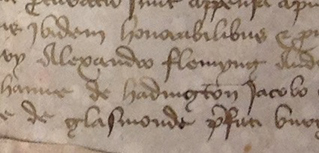
The witnesses include significant officeholders from the town of Perth, one of whom is Alexander Fleming (Flemyng), baillie of Perth. One of two seals originally suspended on tags from the base of the charter survives, that of David Fleming, featuring the inscription S DAUID FLEMYNG and a merchant’s mark, possibly a boat.
Adrianus Junius (1512-75)
Hadriani Iunii medici emblemata, ad D. Arnoldum Cobelium
Antwerp: Christophe Plantin, 1565
Typ NAn.B65PJ
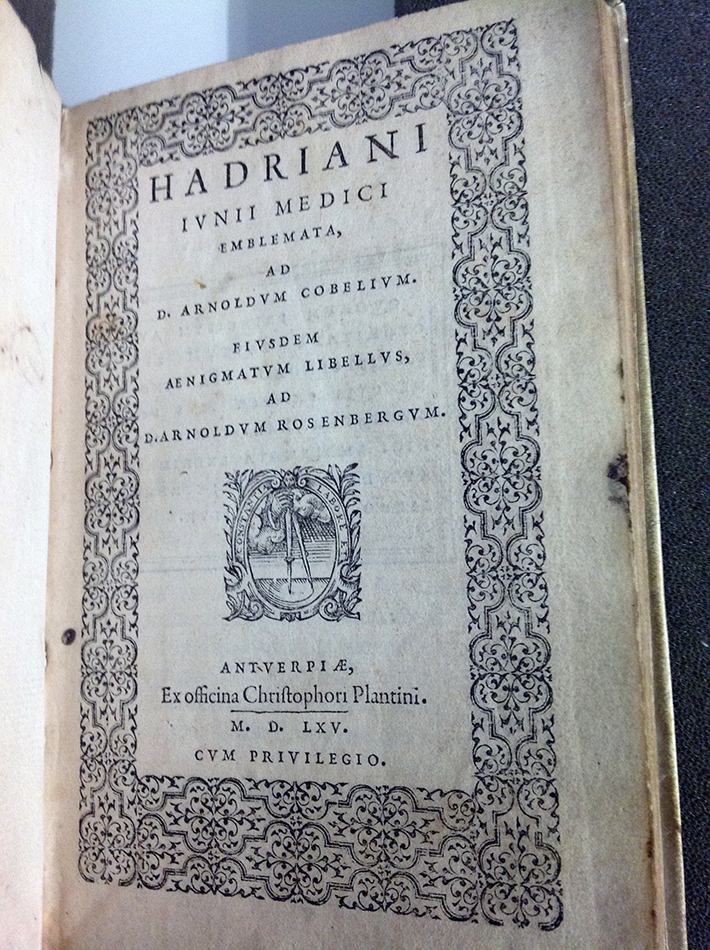
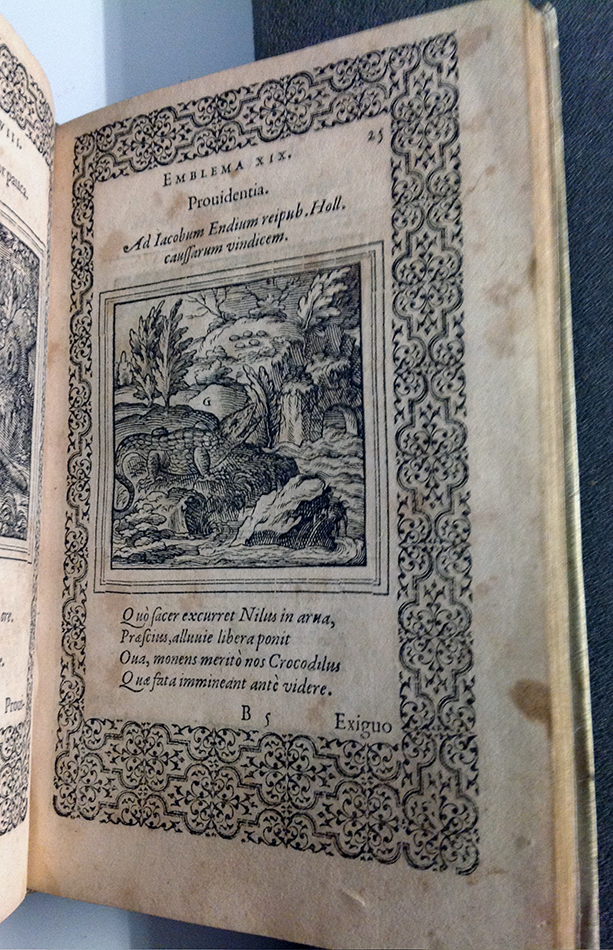
This emblem book with amazing plates and full engraved pages is a small but exquisite example of the art of the most famous printing house in Antwerp. The emblem book presents collections of images paired with short, often cryptic, text explanations.
Plantin moved from Paris to the booming commercial center of Antwerp, where he became a free citizen and a member of the Guild of St Luke, the guild responsible for painters, sculptors, engravers and printers. He quickly gained a reputation for some of the best printing of his time. The art of engraving then flourished in the Netherlands, and Dutch engravers illustrated many of his editions. His printer’s mark features a golden compass.
Nicholas de Nicolay (1517-83)
Les navigations peregrinations et voyages, faicts en la Turquie par Nicolas de Nicolay …
Antwerp: Willem Silvius, 1576
Typ NAn.B76SN
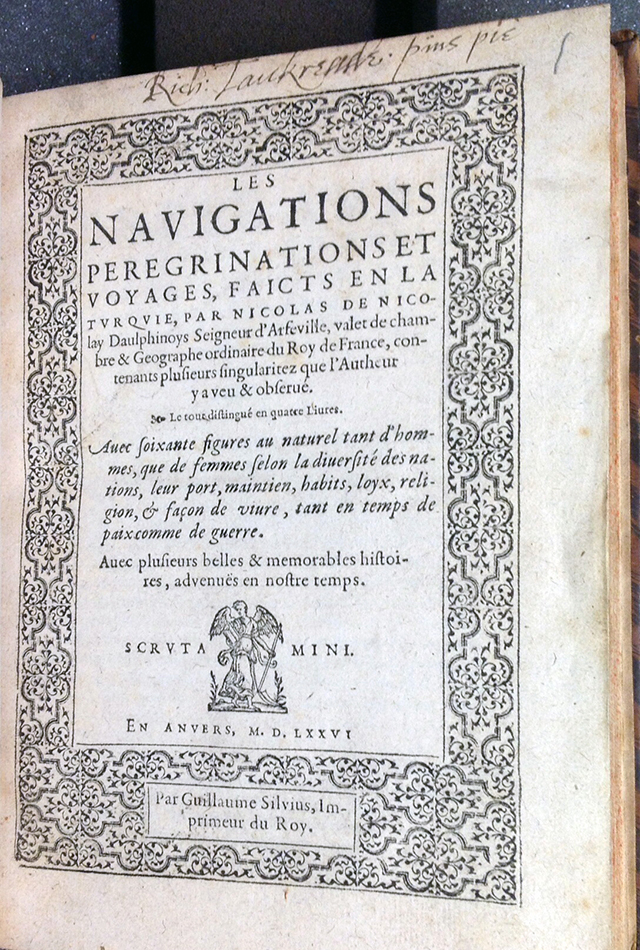
In 1551, King Henry II of France ordered Nicolas de Nicolay to follow Gabriel d’Aramon (envoy and ambassador to the Grand Turk), during an embassy to Sultan Suleiman the Magnificent. During this trip his mission was to make informal surveys. The mission passed through Malta, Algeria, Tripoli, the Greek islands and Istanbul. He returned with 800 to 900 drawings of sites, cities, islands, ports, castles and fashion.
The book, with its famous costume plates by Nicolas Nicolay was first published in Lyon in 1567. It was translated into various languages and left a deep mark on later publications on the same topic. Its success was largely due to the 60 (later expanded to 62) illustrations of the different costumes worn in the areas Nicolay visited.
This copy was printed in Antwerp and comes from the library of Sir Steven Runciman.
15th century theological tracts
owned by Archbishop William Scheves (c. 1440-97)
Typ NL.A85JT
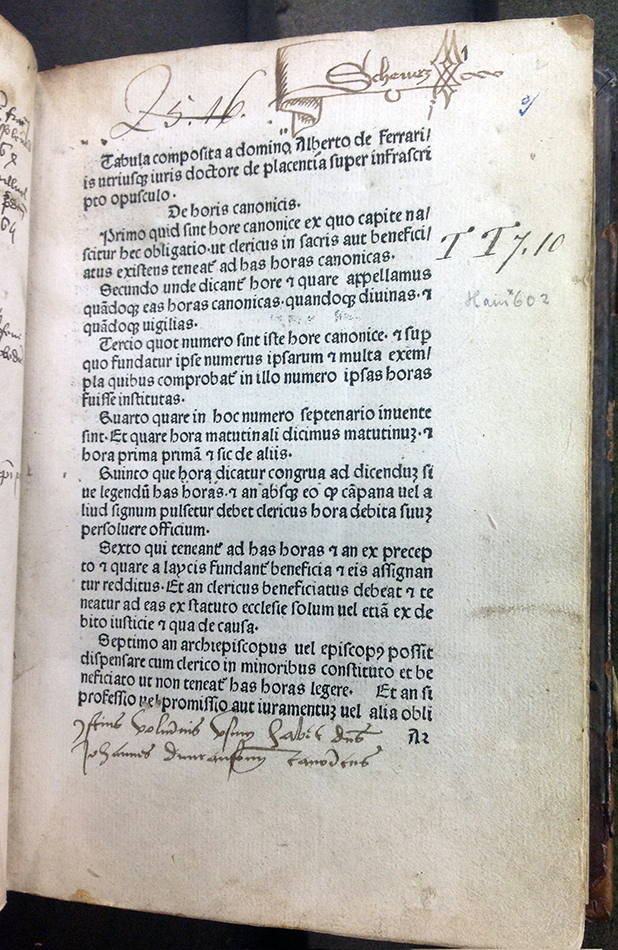
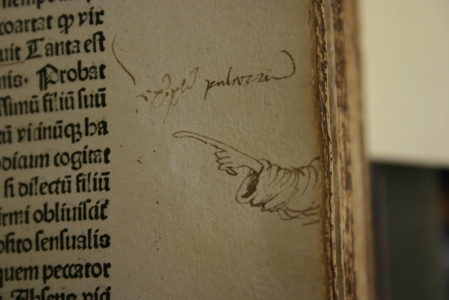
This book is a collection of six religious tracts printed in Cologne (1470), Louvain (1479, 1483 and 1485) and Antwerp (1487 and 1491) and bound together. It is one of the many volumes known to have belonged to William Scheves, Archbishop of St Andrews, whose distinct signature and manicula, or pointing hands, can be found throughout.
His books eventually passed to St Leonard’s College (the college most closely connected to the monastic life of the Cathedral and archbishopric) as is evidenced in this instance by the signature of Principal John Duncanson at the foot of the opening page. Different ownership inscriptions help us trace the history of how these books were passed from one person to another and how the University came to own them.
This volume includes two examples of the printing of Mathias van der Goes in Antwerp: Saint Bernardino da Siena, Tractatus diversi sancti bernhardini (c. 1487-90) and Saint Augustine of Hippo, Tractatus sancti Augustini (1491).
Emanuel van Meteren (1535-1612)
Historia Belgica nostri potissimvm temporis Belgii svb qvatvor Burgundis & totidem Austriacis principibus conuiunctionem & gubernationem breuiter
[Antwerp]: [s.n.], [1598]
Typ NAn.C00XM
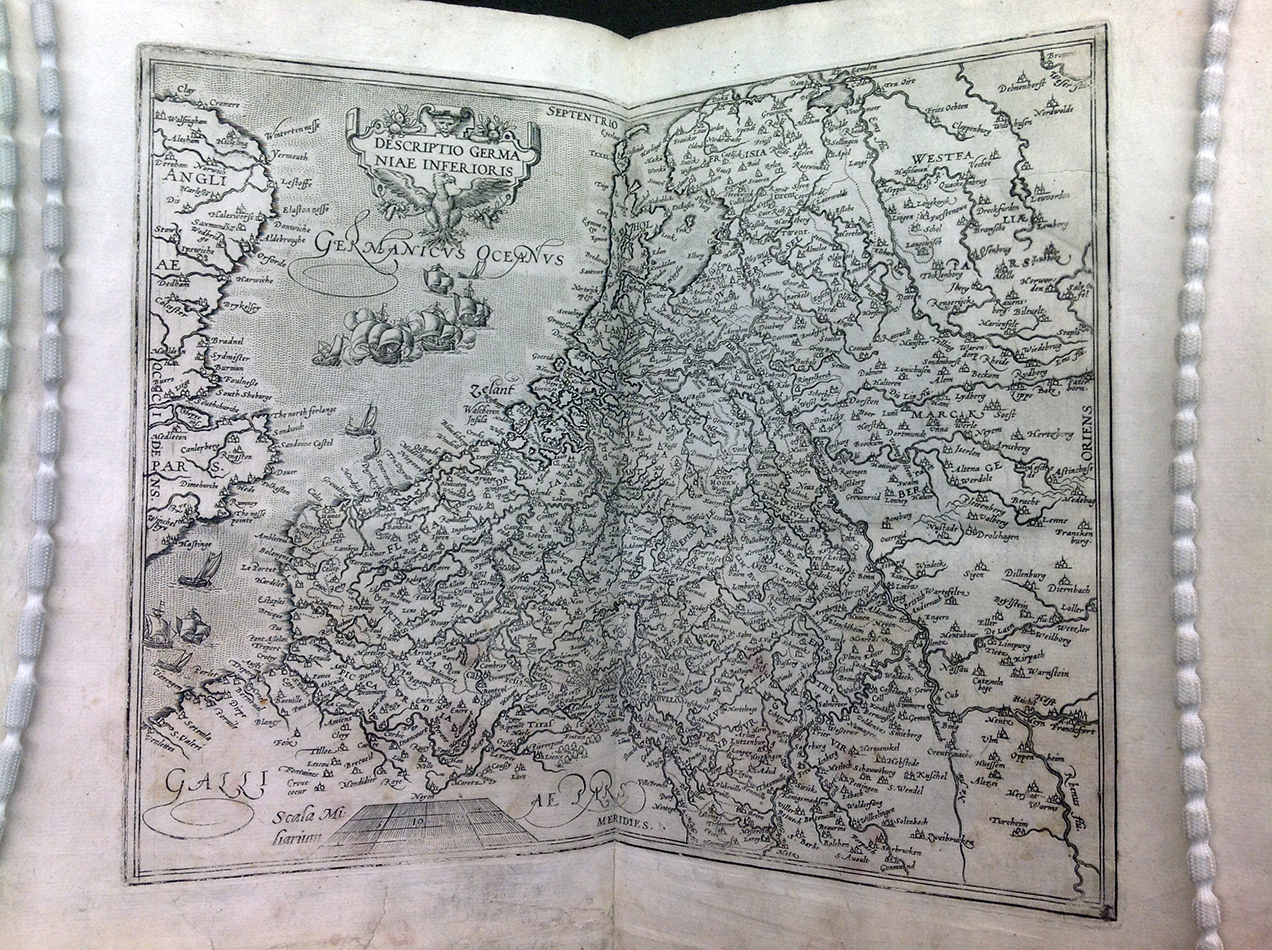
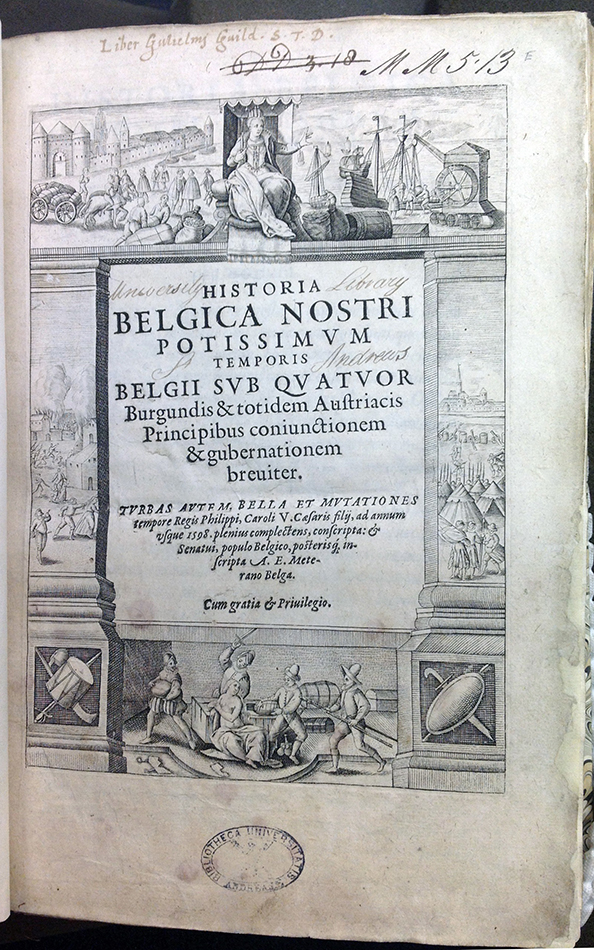
Emanuel van Meteren or Meteeren (6 September 1535 – 11 April 1612) was a Flemish historian and Consul for “the Traders of the Low Countries” in London. He was born in Antwerp, the son of Sir Jacobus van Meteren, Dutch financier and publisher of early English versions of the Bible, and Ottilia Ortelius, of the famous Ortelius family of mapmakers, and was nephew of the cartographer Abraham Ortelius. This work is a translation of a manuscript subsequently published, with additions, under the title “Belgische ofte Nederlandtsche histoire van onsen tijden” (and variants). An English translation was published in London in 1602 under the title A true discourse historicall of the succeeding governours in the Netherlands.
Part of the William Guild bequest with his ownership inscription.
Book of Hours, c. 1430-40
illuminated manuscript; Southern Netherlands
ms38988
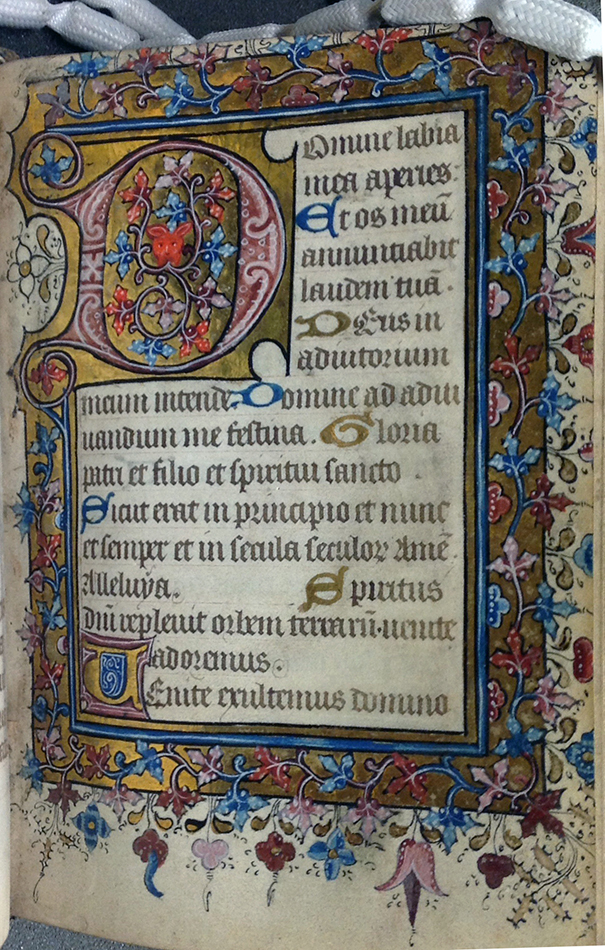
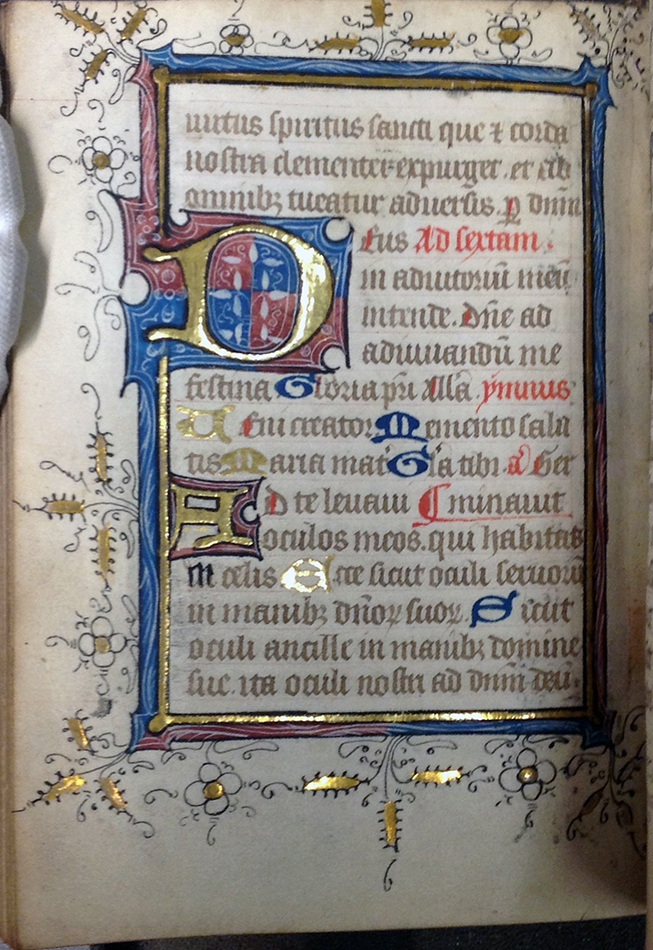
Illuminated manuscript Book of Hours, in Latin and Dutch on vellum, produced in the Southern Netherlands (probably the Ghent-Tournai area or Mechelen), c. 1430-40.
This charming manuscript is of high quality and has delicate illumination and decorated borders in gold and colours. The illumination is influenced by French, Dutch and Flemish traditions. The manuscript was probably produced for a lay person, who was not necessarily a member of a convent. It is prefaced by a calendar which contains the names of Dutch saints.
